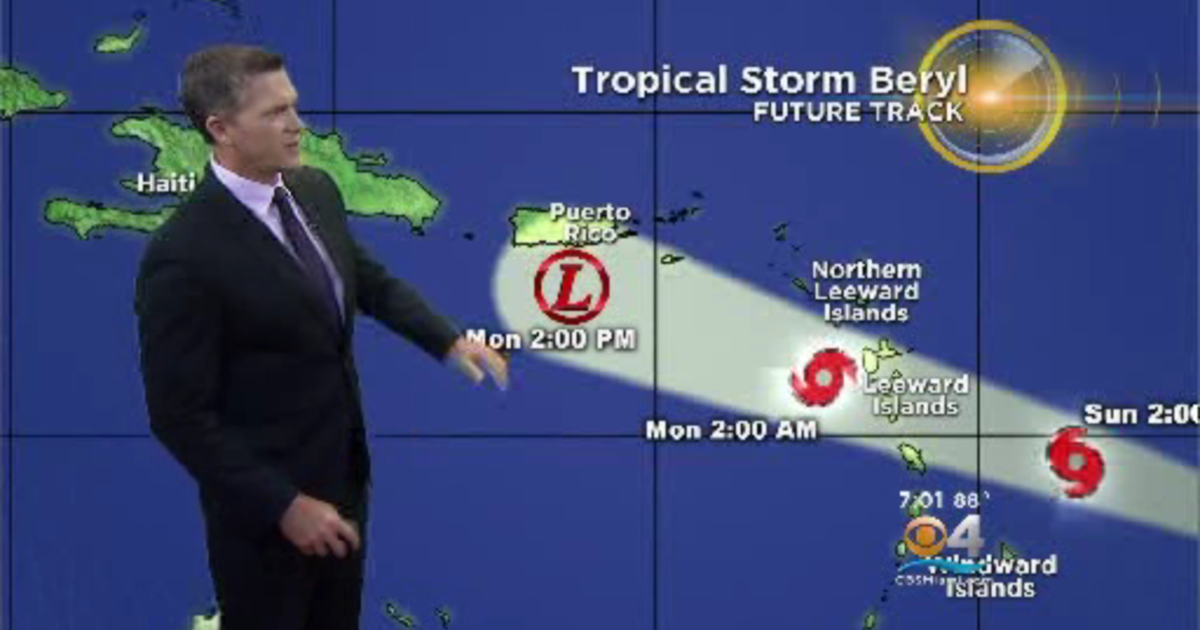Hurricane Beryl’s Impact on Jamaica

Hurricane beryl jamaica – Hurricane Beryl, a Category 1 hurricane, made landfall in Jamaica on July 5, 2023. The hurricane brought heavy rainfall, strong winds, and storm surges to the island, causing widespread damage.
As Hurricane Beryl lashes Jamaica, its winds and rains pound the island mercilessly. The relentless storm brings to mind the resilience of the Pittsburgh Steelers, exemplified by Brandon Aiyuk. Just as the Steelers have weathered countless storms on the field, Aiyuk has overcome adversity to become a rising star.
Now, as Jamaica battles the hurricane, the Steelers stand as a beacon of hope, reminding us that even in the face of nature’s fury, the human spirit can prevail.
The most severely impacted regions of Jamaica were the eastern and southern parishes, including Kingston, St. Andrew, St. Thomas, and Portland. These areas experienced the brunt of the hurricane’s force, with sustained winds of up to 120 kilometers per hour (75 miles per hour) and rainfall exceeding 200 millimeters (8 inches).
As Hurricane Beryl threatens Jamaica, the country braces for the impact of this powerful storm. The hurricane is expected to bring heavy rains, strong winds, and potential flooding to the island. As the storm approaches, residents are advised to take necessary precautions and stay informed about the latest developments.
For more information and updates, visit hurricane to hit jamaica. As Hurricane Beryl continues to approach, it is crucial for Jamaicans to stay vigilant and follow official guidance to ensure their safety.
Infrastructure Damage
Hurricane Beryl caused significant damage to Jamaica’s infrastructure. Many roads and bridges were washed out, disrupting transportation and communication. Power lines were downed, leaving hundreds of thousands of people without electricity. Several buildings were also damaged or destroyed, including homes, schools, and businesses.
Property Damage
The hurricane also caused extensive property damage. Many homes and businesses were flooded, and some were completely destroyed. Agricultural crops were also damaged, with farmers reporting losses of up to 50%.
Economic Impact
The economic impact of Hurricane Beryl is still being assessed, but it is expected to be significant. The damage to infrastructure and property will require billions of dollars to repair. The loss of agricultural crops will also have a negative impact on the economy.
Community Response and Recovery Efforts: Hurricane Beryl Jamaica
In the aftermath of Hurricane Beryl, local authorities and emergency services in Jamaica swiftly implemented response measures to address the immediate needs of affected communities. These included the deployment of search and rescue teams, the provision of emergency shelter and supplies, and the restoration of essential services such as electricity and water.
Role of Community Organizations and Volunteers
Community organizations and volunteers played a crucial role in assisting with recovery efforts. They provided support to those who had lost their homes or belongings, organized clean-up drives, and assisted with the distribution of aid. Local churches and community centers served as hubs for relief efforts, offering food, clothing, and counseling services to those in need.
Challenges Faced by Communities
Communities faced significant challenges in accessing essential resources and rebuilding their lives after the hurricane. Many areas were left without electricity or water for extended periods, making it difficult for residents to meet their basic needs. Transportation and communication infrastructure were also damaged, hindering access to healthcare, education, and other essential services.
Lessons Learned and Preparedness for Future Hurricanes
:quality(70)/d1hfln2sfez66z.cloudfront.net/11-12-2019/t_423d5e2948964ee2aff5c801c5f08a9b_name_CB725C2ADED4425FB11D26B8BA968321_1.jpg)
Hurricane Beryl’s impact on Jamaica provided valuable lessons for disaster preparedness and response. These lessons have informed improvements in Jamaica’s disaster management plans and have contributed to the country’s increased resilience to future hurricanes.
Key Lessons Learned
- The importance of early warning systems: Early warnings allowed for timely evacuations and helped reduce the number of casualties.
- The need for improved infrastructure: Inadequate infrastructure, such as weak bridges and roads, exacerbated the impact of the hurricane.
- The importance of community preparedness: Communities that were well-prepared with emergency plans and supplies were better able to cope with the hurricane’s aftermath.
Improvements to Disaster Preparedness and Response Plans
As a result of Hurricane Beryl, Jamaica has made significant improvements to its disaster preparedness and response plans, including:
- Upgrading early warning systems: The government has invested in upgrading early warning systems to provide more accurate and timely warnings.
- Strengthening infrastructure: The government has prioritized the strengthening of infrastructure, such as bridges and roads, to better withstand hurricanes.
- Enhancing community preparedness: The government has implemented programs to promote community preparedness, including training and the distribution of emergency supplies.
Recommendations for Further Strengthening Hurricane Preparedness and Resilience, Hurricane beryl jamaica
While Jamaica has made significant progress in hurricane preparedness, there are still areas where further improvements can be made:
- Investing in climate adaptation: Jamaica should invest in climate adaptation measures, such as seawalls and flood defenses, to mitigate the impact of future hurricanes.
- Promoting sustainable land use practices: Jamaica should promote sustainable land use practices, such as reforestation, to reduce the risk of landslides and flooding.
- Educating the public about hurricane preparedness: The government should continue to educate the public about hurricane preparedness and encourage individuals to take responsibility for their own safety.